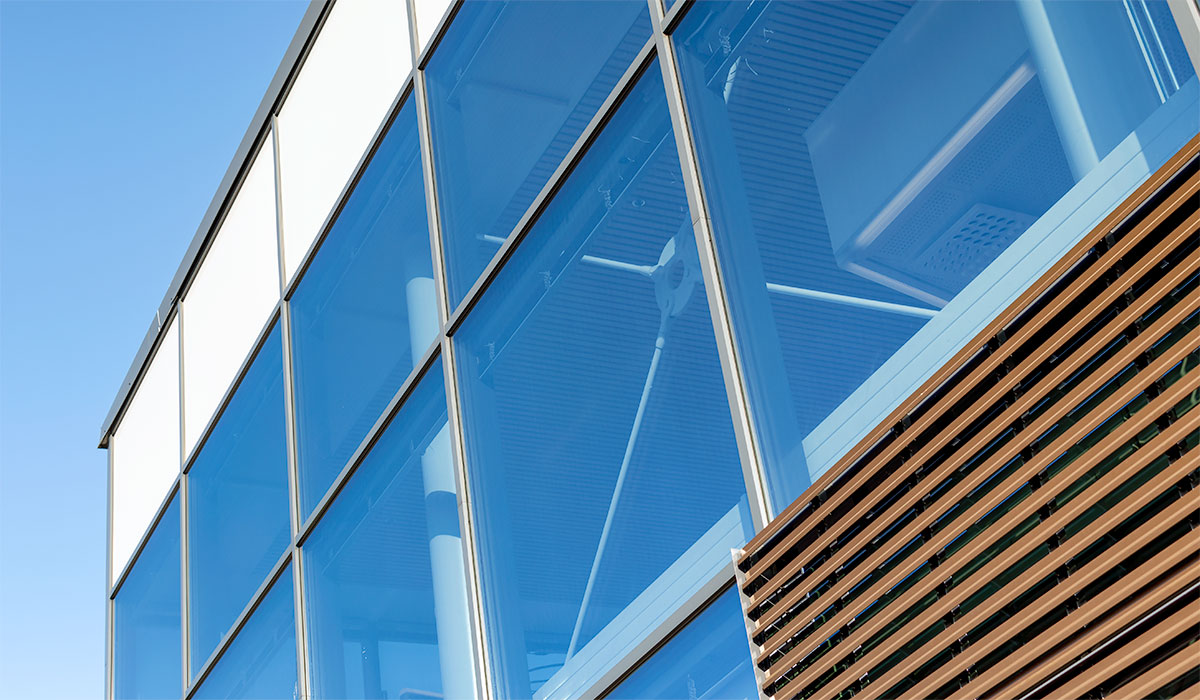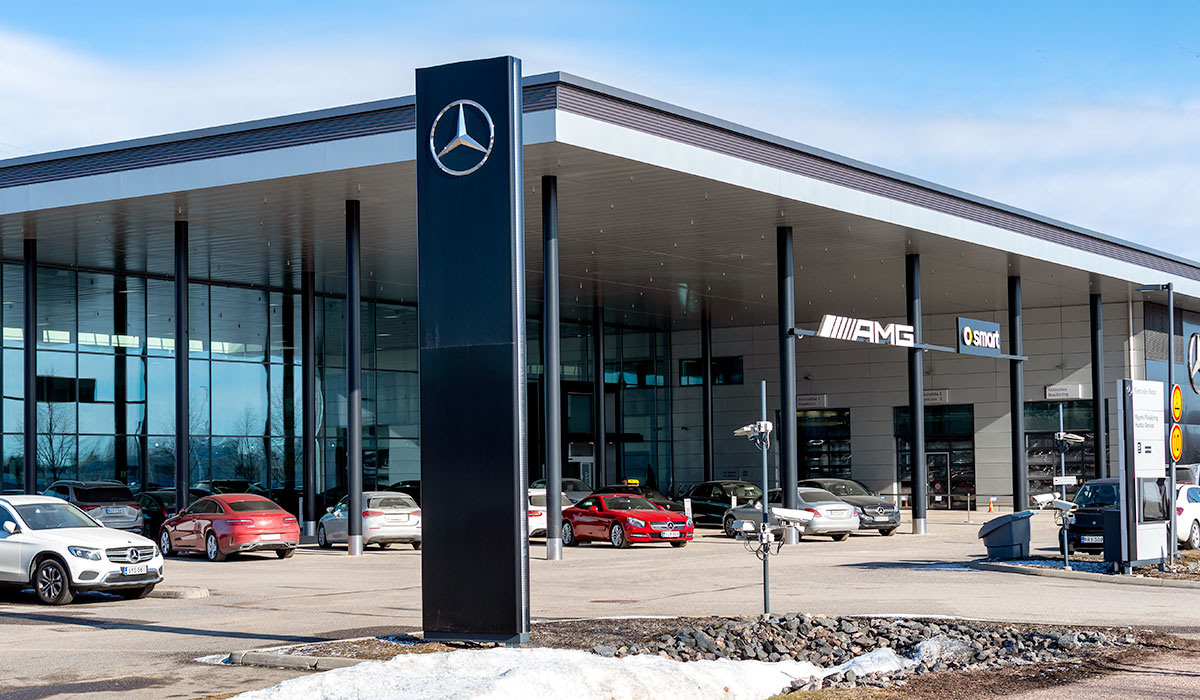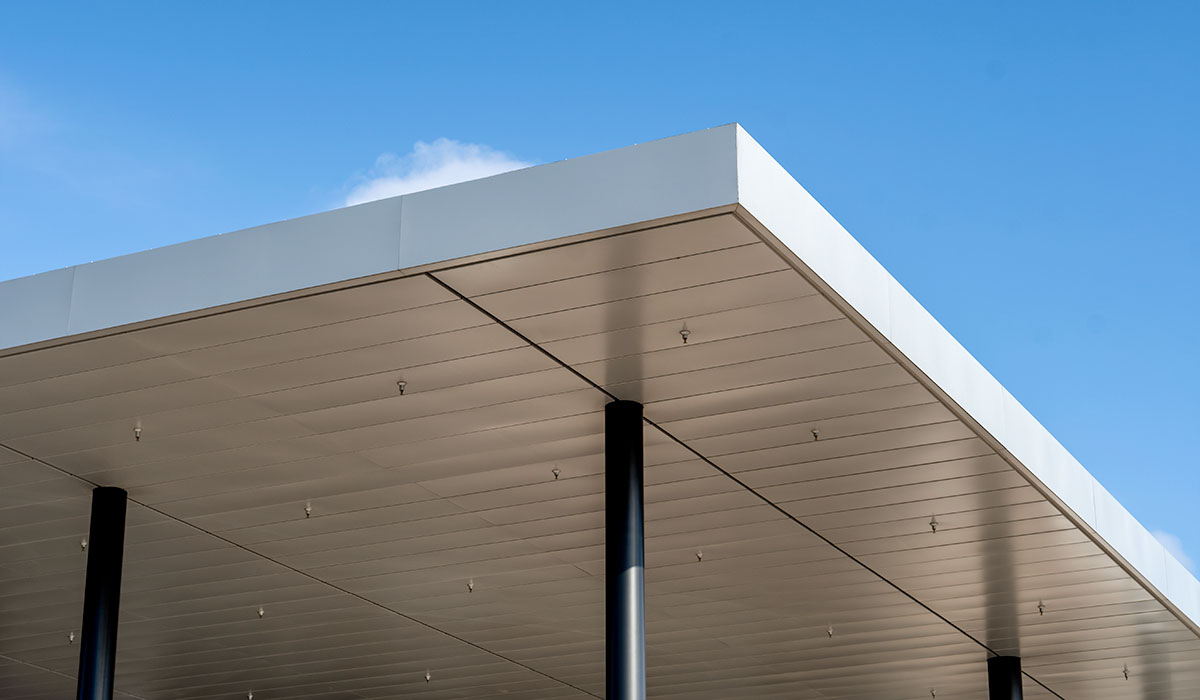The carbon dioxide emissions of building elements and their materials have been studied extensively, but the impact of fire safety design on the carbon footprint of buildings has not previously been studied. The Master’s thesis Effect of performance-based fire safety design on building’s carbon footprint, approved by KK-Palokonsultti Oy’s fire technology designer Eemeli Könkkölä at Aalto University in December 2021, examines the impact of performance-based fire safety design on the carbon footprint of buildings.
Traditional prescriptive fire safety design methods often overestimate the true thermal stress affected on building elements which might lead to excessive use of building materials and fire protection. In his master’s thesis, Könkkölä demonstrates that with the right design methods and good design work, the use of materials could be significantly reduced in many projects. By reducing the amount of materials, significant cost savings can be achieved and at the same time affect the carbon footprint of the building at a significant level. If the design can cut the amount of structural steel used in load-bearing steel structures, the reduction in the carbon footprint can be very significant.
Underlying concerns about climate change
Climate change, which threatens the future of mankind, has increased the pressure to reduce CO2 emissions from buildings and the construction industry. Research by the European Commission shows that buildings account for a considerable proportion of total emissions: buildings account for about half of energy consumption and half of the use of resources. According to the construction industry, Finnish buildings use nearly 40 % of all energy consumed and account for more than 30 % of emissions. Including transport, the built environment accounts for 60 % of energy use and 55 % of emissions.
The European Commission has carried out several projects to reduce the environmental impact of buildings. One of them is the European Green Deal, which aims to reduce net emissions of CO2 from construction to zero by 2050. To achieve this objective, European governments have vigorously called on the construction industry to assess emissions from their products and construction companies to look at their own emissions. In Finland, the Ministry of the Environment published the Finnish Lifecycle Assessment Method (LCA) in Autumn 2019, which guides the construction industry in the assessment of carbon emissions from buildings throughout their life cycle.
Carbon emission from construction
The buildings consist of a huge number of different building elements with significantly different environmental impacts. The carbon footprint of the building’s life cycle consists of the manufacture and transport of building elements and materials, actual construction, the operation and maintenance of the building, possible changes of building elements and measures related to the end of the life cycle (such as demolition work). Construction and building materials have a significant share of total building emissions.
Most of the building’s carbon emissions are generated during the operation phase from the heating, cooling, and maintenance of the building, so the energy efficiency and low-carbon energy production of buildings remain the main starting point for reducing the carbon footprint of the buildings. Improving the energy efficiency of the built environment is the most cost-effective way to mitigate climate change. As energy efficiency improves and the energy produced becomes less carbon-intensive in the future, the relative share of construction and building materials in greenhouse gas emissions will increase.
Load-bearing structures have the greatest impact on the share of building elements and materials in the building’s carbon footprint. The quantities and weights of materials also affect emissions from transport and actual construction work. The carbon footprint of wooden buildings is the smallest, footprint of the buildings with concrete frames is the largest. According to estimates, the production of cement used in the production of concrete accounts for 5-8 % of global greenhouse gas emissions and produces more climate emissions globally than air transport. Steel framed buildings and hybrid solutions, where wood is used in combination with traditional steel and concrete structures, are located between these extremes in terms of emissions.
Most of the emissions of materials are generated during the manufacturing phase. The most significant carbon emissions from steel production are generated by mining and processing iron ore into steel. Structural steel has a large carbon footprint due to the high temperatures required for its manufacture. The carbon footprint of steel made of recycled steel may be significantly lower than that of virgin steel, but on the other hand, its production consumes a huge amount of electricity. The production of aluminum used in glass frames is one of the worst carbon dioxide emitters. Aluminum production is estimated to account for 1 % of all emissions that accelerate climate change. It is therefore justified to examine the impact of optimization of the load-bearing steel structures and fire-separating glass structures on the carbon footprint of the building.
Methods of fire safety design
In Finland, the fire safety design of buildings is based on the Decree on the fire safety of buildings by of the Ministry of the Environment, which enables design using tabulated pre-calculated values and classes (prescriptive fire safety design), or based on the expected fire development (performance-based fire safety method).
Prescriptive fire safety design is a traditional design method. It is based on the intended use of conventional buildings, predetermined fire load groups and the testing and classification of the fire properties of building elements. With tables the fire load of the building is taken into account according to the general fire intensity curve, the so-called standard fire, and therefore it often overestimates the heat stress on the building elements. This can lead to unnecessarily expensive and material-wasting structures, as in a real fire situation the fire load is often clearly lower than estimated. It is also difficult to apply prescriptive fire safety design to complex buildings with exceptional structural solutions or larger buildings than usual.
The material volumes of building elements can be optimized by performance-based design, which, unlike the prescriptive design, takes into account the fire situations likely to occur in the building, the resulting fire loads with their and the actual locations. Performance-based design can achieve even fair cost savings in construction and material costs so that the total fire safety still corresponds to at least the fire safety level according to the prescriptive design. Often the safety level is better.
Performance-based fire safety design is now commonly used, for example, in the design of load-bearing steel structures, because prescriptive fire safety design often leads to oversized structures and unnecessary use of intumescent paints. Studying the fire safety of glass structures is also a typical application of performance-based fire safety design. Performance-based fire safety design aims to reduce the requirements for the fire properties of glass structures, thus enabling lighter and cheaper implementations.
The performance-based fire safety design can also effectively take into account the impact of fire-related equipment installed in the building. These include automatic fire extinguishing systems. The value of these systems in limiting or stopping a fire in a real fire situation may be greater than other methods, such as intumescent paint of steel structures, so significant savings can be achieved by taking them into account.
Impact of performance-based fire safety design on the carbon footprint of the building
The aim of Eemeli Könkkölä’s master’s thesis was to investigate the impact of performance-based fire safety design on the carbon footprint of buildings in two significant structures, load-bearing steel frames and fire-compartment glass structures. The target structures were selected because their fire design generally uses performance-based fire safety design and because steel production is a major source of carbon dioxide emissions.
The impact of performance-based fire safety design on load-bearing steel structures was examined by comparing the load-bearing steel structures of the three existing buildings and their carbon footprint with similar structures designed with traditional prescriptive design.. All the structures studied come from real buildings located in Finland and represent typical Finnish construction projects (large commercial building, small business premises building and sports hall) whose fire design uses performance-based fire safety design in general for cost reasons to reduce the use of structural steel and fire protection.
Fire compartment glass structures and glass walls covering large facades installed in aluminum frames are also often designed with performance-based fire safety design. Due to the significant price of fire-compartment glass, optimizing the fire resistance requirements of glass structures often achieves significant cost savings. The higher the fire resistance requirements are set for the glass structure, the heavier the glass material is used for it and the heavier the aluminum frames are needed to support the glasses.
The results speak in favour of performance-based fire safety design
Könkkölä’s master’s thesis shows that the carbon footprint of buildings designed with performance-based fire safety design can be significantly reduced compared to those designed by presprictive design, especially if the amount of structural steel can be significantly reduced by design. The carbon footprint of all load-bearing steel structures examined in the master’s thesis was reduced through performance-based fire safety design.
The best chance of a significant reduction in carbon dioxide emissions can be found in large commercial premises with high fire resistance requirements for load-bearing structures. In the case of a commercial building, a carbon footprint reduced almost ten per cent by reducing structural steel. In smaller buildings, the benefit of performance-based fire safety design turned out to be less, but not insignificant. If the performance-based fire safety design can show that the steel frame can be implemented without intuscement paint, the carbon footprint will decrease even more.
Regarding glass structures, the results show that by lowering the requirements for the protective properties of fire glass by performance-based fire safety design, the carbon footprint of the structures can be cut by lighter and cheaper implementations from approximately one fifth to up to 72 %. The impact of glass structures and aluminum frames on the carbon footprint was assessed by comparing glass structures designed for different fire classes. The carbon footprint of the glass elements was calculated on the basis of available European environmental statements. The carbon footprint of the aluminum frame was calculated based on the values found in the literature.
Effect of performance-based fire safety design on building's carbon footprint
Eemeli Könkkölä’s Master’s thesis Effect of performance-based fire safety design on building’s carbon footprintwas carried out in cooperation with KK-Palokonsultti Oy. The supervisor of the work was Professor Simo Hostikka and the work was supervised by Katariina Kevarinmäki, M.Sc., from KK-Palokonsultti Oy. Könkkölä’s tasks at KK-Palokonsultti Oy include fire simulations and drawing up fire technology plans.
The master’s thesis can be found online at https://aaltodoc.aalto.fi/handle/123456789/112638






